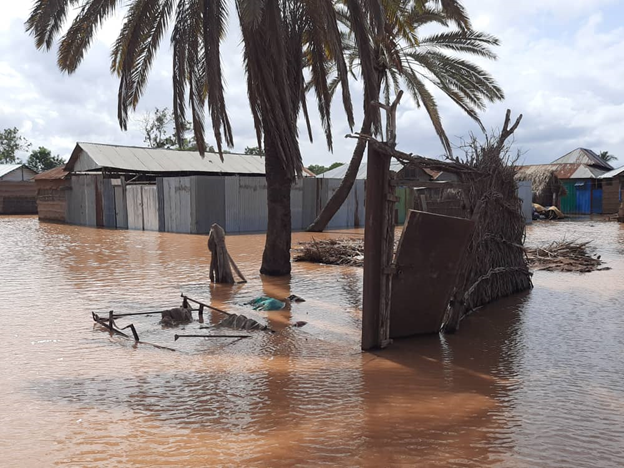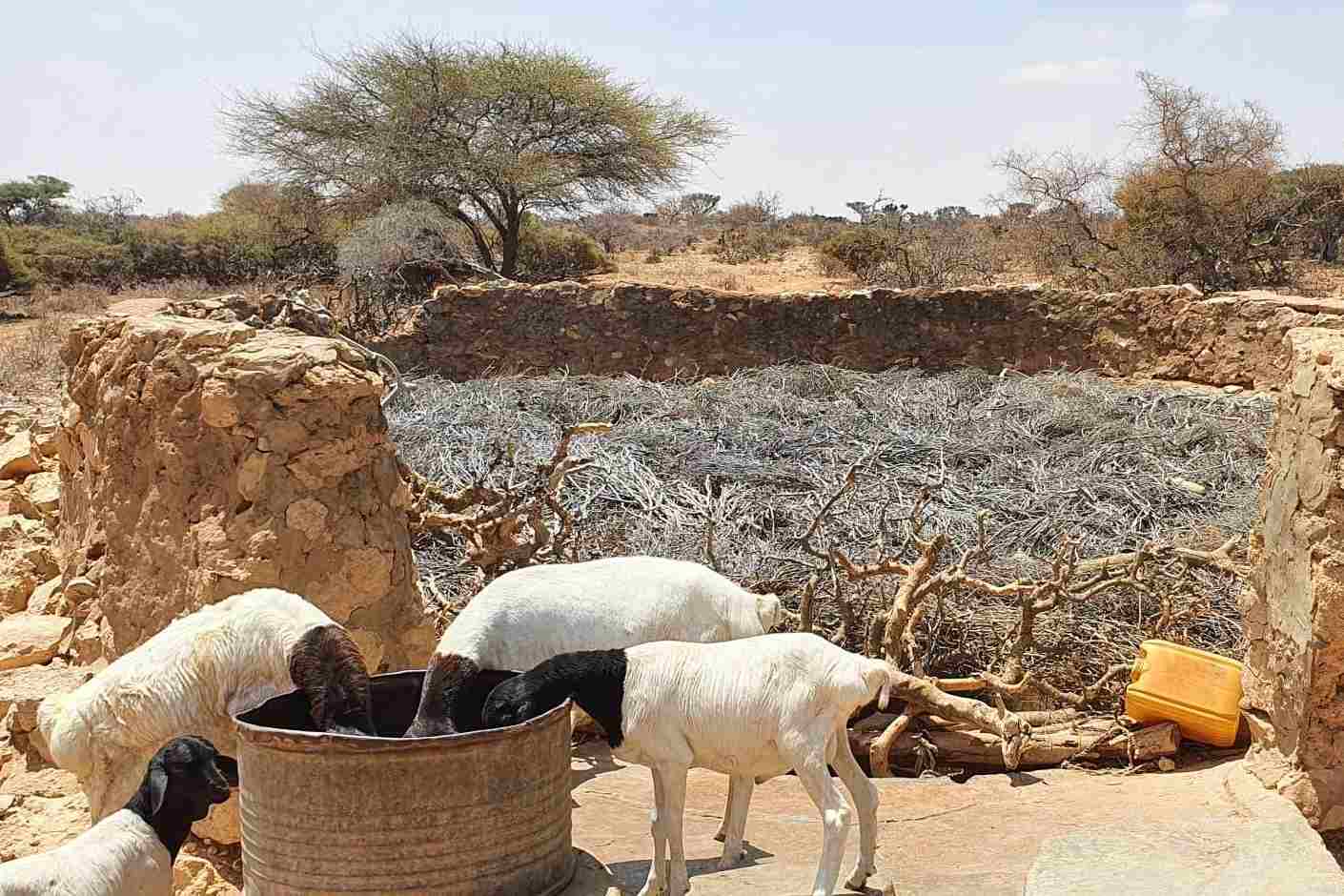The situation in Somalia's Middle Shebelle region is devastating. Every day, floodwater is causing more damages in new areas along the river as river banks have burst as result of the pressure of the water from the Ethiopian highlands. People are trying with all their might to resist the catastrophe. Two dedicated casual laborers lost their lives when they tried to close one of the river breakages.
People have lost their homes, livestock and farmland
The water masses are waist-high in the villages of our project area in the districts of Mahaday and Jowhar. More than 60,000 people are affected. Many of them have lost their homes, their livestock and their farmland. Hussein Abdi, from our partner organization PAH, has assessed the situation on the ground. He estimates the loss of agricultural land at 40,000 hectares, with serious consequences for the income and food situation of the people. The areas along the Shebelle River are considered the region's "green basket" because the soil is so fertile and the nearby river provides the water. But now the river has become a raging danger. In a very short time, people have had to flee. They have set up provisional settlements in higher areas. Some also moved to the district capital Jowhar, which itself is surrounded by water and can only be reached by boat.
Flood is life-threatening disaster that requires immediate lifesaving mitigation measures. Our activities contribute to mitigation, rehabilitation and communal recovery stages.
Securing the drinking water supply
One of the acute problems on the ground is the absence of safe supply of drinking water. In view of the destroyed wells and the lack of infrastructure, the people resort directly to the river water, with considerable danger to their health. Hussein Abdi fears that water-borne diseases will spread quickly. In the course of our cooperation, PAH has therefore started initial emergency measures in the area of water supply and hygiene. Fifteen flooded wells were chlorinated to improve water quality by killing pathogens. A hygiene team with ten volunteers was also quickly trained. They have since been educating people about health hazards resulting from the flooding situation. One of the most important messages: "Boil water before use!"
The next step is now to rehabilitate two shallow wells that were destroyed.
Health care with mosquito nets and other relief activities
Malaria, along with severe diarrhoeal diseases, is the second acute health threat in the flooded area. "When the floodwaters recede, the most severely flooded areas will remain flooded for the next two to three months," warns Hussein Abdi from our partner organization. The water areas are an ideal breeding ground for mosquitoes. Therefore, the distribution of about 400 mosquito nets is part of our joint emergency aid. In addition, water buckets, soap and sanitary pads are distributed as relief supplies. All activities are precisely coordinated with the needs previously identified in the assessment. Our emergency aid is further more coordinated with the activities of more NGOs on the ground. For example, the affected people receive cash support by international NGOs to buy food.
Climate change as the main cause
Not far from the flood area, Somalia is currently experiencing drought. The cause is extremely irregular rainfall in East Africa. On the ground, no one doubts that this is a consequence of global warming. This season, the upper reaches of the Shebelle River, in the Ethiopian highlands, received extremely heavy rainfall at times. At the same time, the texture of the riverbanks has been degraded for years. The high water pressure thus leads to the dreaded river bank breakages that result to floods. In most other parts of Somalia, on the other hand, rainfall is far below average in the rainy season that has just ended. This also includes the Gedo region, where arche noVa, together with another local partner organization ASEP, has built two sand dams. These were able to collect the rain in the past weeks. The water stored here has become the most important local source, because the water in the neighbouring deep wells is getting more and more salinated.
Read more information about the arche noVa activities in Somalia here.















